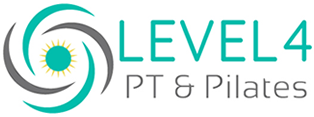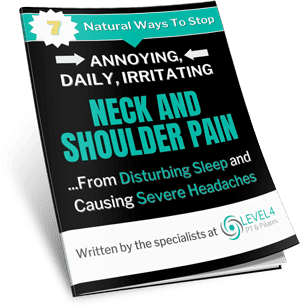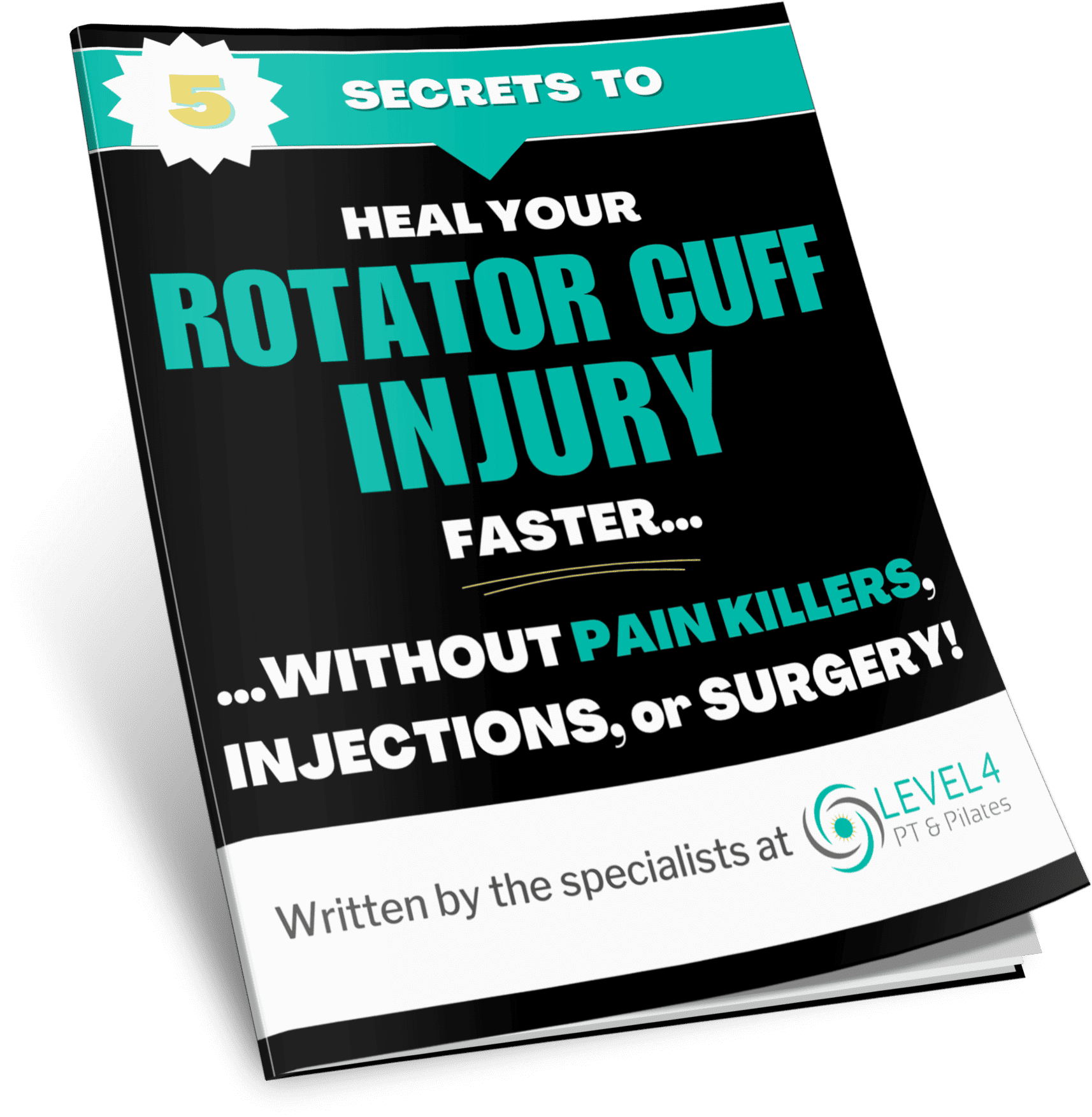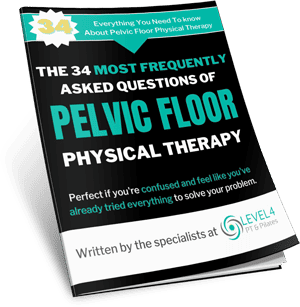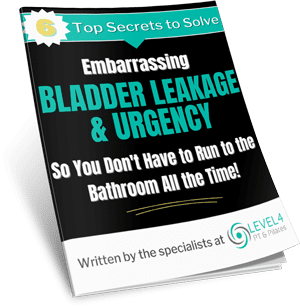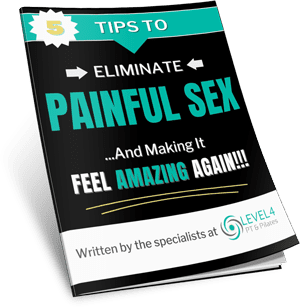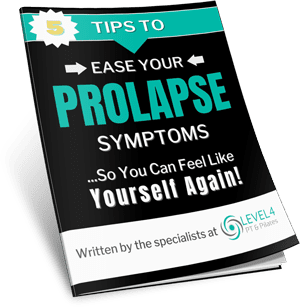
Once upon a time I was superfit. I never thought twice about running 5 miles, I couldn’t wait to spend an hour or two at the gym lifting weights and I even played professional soccer.
Owning and business and having kids changed all that. Less time on my hands left less time. A body in its 40s doesn’t build muscle or burn fat like the one I had two decades ago. My joints hurt more. Everything takes longer to recover from.
But that’s no reason to give up on fitness. Study after study demonstrate that our bodies are a “use it or lose it” situation. The longer we stay active, the longer we remain able to stay active.
In the vein of “I make mistakes so you don’t have to,” here are 14 fitness mistakes to avoid as you enter middle age and beyond. If you follow them, your body will thank you well into retirement.
1. Not Getting Quality Sleep
If you aren’t getting at least 8 hours of sleep per night, it could be one reason you are not seeing the results you hope you would. Stay away from the alcohol and caffeine several hours before bedtime, but drink plenty of water. Try reading a book with soft light before bed to help get you relaxed and sleepy. A lack of sleep weakens your immune system, which is the last thing you want at this time in our society. Turn on the “do not disturb” setting on your smartphone or tablet or keep them out of the bedroom if possible.
2. Skipping the warm up
Proper dynamic warm-ups are essential for injury prevention, especially if you have a “problem area.” Equally important is a proper cool down and readdressing of problem areas during this quarantine. Take extra time for a proper warm up and add extra stretching after a workout.
When you’re ready and motivated to work out, stopping to stretch and warm up first can feel like a total drag. However, skipping this vital step is setting you up for injury later down the road. Working out on cold muscles and joints is never fun, but with age, we are even more prone to wear and tear, a problem enhanced by failing to warm up. We also take a lot longer to recover from injury, so unless you want to be out of action for 3 weeks with a strained hamstring or a sprained ankle, start making it part of your regular routine!
3. Saying I’m too busy (This is the most important one in my opinion)
Middle age is a demanding time. Kids, a spouse, a job, your community, and maybe a minute for a hobby conspire to leave very few hours in the day for you to spend on fitness. But you have to make it happen. Here are a couple of strong options:
- Exercise early in the morning, before things go wrong with your day – making it easy for you to make up excuses as to why you can’t workout.
- Make exercise a necessary part of your daily routine. For example, your garage gym workout before you sit down to work at your home office for the day.
- Exercise with your family (I do exercise routines with my daughters) to combine quality time with exercise (e.g. a morning run in your neighborhood or a bodyweight routine in the living room).
- Try a class or coach who will keep you accountable so you will show up even when it’s difficult.
4. Neglecting Your True Fitness Level
It starts out as a simple desire: You just want to get more exercise to stay fit, even if you put on the pounds in 2020 like a lot of people. But somehow, a kind of “fitness amnesia” takes over. Before you know it, you’ve blocked out the years — sometimes decades — since the last time you exercised.
Whatever your exercise, it’s going to happen. Some 20-something who’s almost as good as you used to be is going to be in class, on the gym floor, or in the next lane over. You’ll be overcome with the impulse to show that you’ve still “got it.” And you might even win.
But you up your chances of injury exponentially when you do so. Even if you get away clean, your muscles will be sore and fatigued for as much as a week afterward, which limits how good your next few workouts can be.
The end result is that you do too much too quickly for too long with too much intensity. And injury is often the end result. The shoulders and knees are among the body parts at greatest risk when old athletic dreams die hard.
When trying to stay fit, be smart about scaling your daily workout to your abilities during this quarantine. A personal trainer or coach will initially help you decide what weights and movements to alter, but after several months, you should be able to determine what you need to achieve in a particular workout routine and how proficient you are with different exercises and movements.
We recommend keeping a journal or log where you have all of your one-rep maxes listed, making them easily accessible for a quick peek if you forget your prescribed weight or workout record times.
5. Not protecting the spine
This tip piggy backs off the previous one. As we age, we progressively lose mobility in the spine, so exercises you used to stay fit in your youth may become more and more difficult. Sit ups, for example, become progressively less safe as you age and put extra stress on your neck and back, which can cause serious problems down the road. Instead of sit ups and other spinal-stressing exercises, try static abdominal workouts like planks instead to stay fit.
6. Not focusing on flexibility
Flexible muscles and resilient joints will prevent you from sustaining a sidelining injury you may not fully recover from. The best way to insure you stay fit is to build in a cooldown stretching routine lasting 10 to 20 minutes at the end of your workout. Stretching while muscles are warm is a flexibility-force multiplier. Take advantage of it to stay fit.
7. Not Incorporating Strength Training
As you get older, you start to lose vitamins and minerals and our health deteriorates. Your bones become smaller, weaker (Osteopenia or Osteoporosis) and more prone to serious injuries. You start to lose your strength and your cardiovascular health begins its downward spiral, and it is more difficult to stay fit.
Your skin begins to lose some of its natural elasticity and starts to sag. Instead of waiting for all kinds of diseases, you can choose to fight back. You can choose to exercise. A few of the hundreds of benefits of weightlifting and exercising include the prevention of heart disease, stroke, high blood pressure, diabetes, obesity, back pain, osteoporosis, psychological effects and many more.
Studies show that 13.5 million people have coronary heart disease, 1.5 million people have heart attacks per year, 8 million people have onset diabetes, 100,000 people are diagnosed with colon cancer each year, 250,000 people suffer from hip fractures per year, 50 million people have high blood pressure and over 60 million people are overweight.
The other benefit of strength training is how it boosts your metabolism. More muscle mass allows you to burn calories more effectively and longer after your workout is complete. This becomes more important after 40 when it is more difficult to lose weight, especially for menopausal women to stay fit.
All this can be prevented with regular exercise and a good diet. Come on, what have you got to lose - besides a few excess pounds.
8. Lifting weights with poor form
This is a big fitness mistake – poor form when lifting weights and doing exercises can lead to a huge range of injuries – but it's especially important as you age, as joints and muscles deteriorate and become less able to resist damage. We recommend booking regular refresher-courses on how to work out safely from qualified professionals that do offer programs geared toward a more individualized approach. (Like the Reclaim Your Health 6 Week Challenge at LEVEL4!)
9. Shift your workouts
Those bizarre and crazy workouts of your 20s are no good anymore to stay fit, especially if you are over 40. One-rep maxes or lifting tractor tires like Rocky are still within our capacity, but we pay for them with soreness and injuries.
Instead, focus on medium-weight, medium-rep exercises with large ranges of motion. Good choices include:
- kettlebells
- yoga
- barbell exercises
- certain martial arts
These exercises produce exactly the kind of strength and flexibility your older body needs.
10. Not listening to your body
If something doesn’t feel right or normal, it could be an injury waiting to happen. It’s often best for your long-term health to take a moment to evaluate your movement and your pain, determining whether it’s a serious threat or simply a part of the everyday discomfort of a workout.
While doing one exercise over and over will certainly help you perfect it, it can also set you up for a workout injury when trying to stay fit. When you repeat the same muscle movements it leads to overuse and repetitive use injuries, such as shin splints, tendinitis, and never-ending muscle soreness.
The way to avoid problems is to vary your workouts -- for example, cardiovascular exercise (stationary bike, rower, jump rope) one day and lifting weights the next.
If you experience pain, go get it checked out (lots of online options right now) . The days of “walking it off” or “no pain, no gain” are behind us. Pain is instead a warning that we’re about to get broken.
11. Not Knowing the Difference Between Good Pain & Bad Pain
Good pain: Burning pain in muscles during a workout is ok and so is muscle soreness 1-2 days following a workout. Soreness while using a foam roller or lacrosse ball is normal!
Bad pain: Sharp, constant pain in a muscle or joint that occurs with activity. Constant pain in a joint or muscle that lasts beyond a couple of days after a workout or has been persistent is not normal.
Performing any intense activity three to six times each week will certainly increase the odds of injury — 90 percent of marathon runners, for example, are sidelined at some point every year. But if you’re smart about your training and the preparation you put in before and after workouts, you’ll dodge a dreaded injury that could set training back for weeks.
12. Not taking days off
Your body needs a rest from the daily pounding it takes. The professional athlete standard of one day off per week will likely not be enough for those of us doing intense training sessions. Instead, aim for two or at times, even three days off per week from all intense exercise, especially in the beginning stages; then gradually ramping up your weekly routines. Do some leisure exercise if you wish, schedule some mobility and flexibility time as mentioned previously, but most importantly, re-energize yourself for the week ahead.
It’s OK to work out every day as long as you’re not feeling the pain. But if you are [working out every day], remember that tired muscles are an invitation to injury. So, give yourself adequate time to rest and recover.
The best way to keep a small injury from becoming a larger one is to rest the sore muscle and consult with a physical therapist. It’s the best avenue to a speedy recovery.
13. Not fueling your body with nutrients for repair
It’s also going to be a must that you fuel your body well after each workout is over. Taking in both carbohydrates as well as protein immediately after the workout session will help to provide your body with exactly what it needs to kick-start the recovery process. Make sure you don’t wait too long before eating after the session is over, the time period immediately following the workout your body will be extra sensitive to taking up those nutrients.
No, you don’t have to deprive yourself of all earthly delights to stay fit and healthy during the quarantine. But fueling your body with the right balance of whole grains, protein, veggies, and fruits can help keep you energized and strong. Be sure you’re getting enough of the right nutrients, whether from food, protein powders, or supplements as this will boost your immune system.
14. Not consulting regularly with a Physical Therapist
Finally, there is a faster way to END pain by consulting a Physical Therapy Specialist as there are virtual options as well as in person options. Getting to see a Physical Therapist online means you’re going to get very fast access to care so you can learn customized techniques that will soothe and relax those tight aching muscles, loosen and lubricate stiff, stuck and painful joints, and strengthen your body so that you can go on doing the things that you love to stay fit at home.
You can often leave a good Physical Therapist session with concerns eased and feel more confident about what you need to do next, inside 20-30 minutes.
Combine all of the “tips” in this blog with an appointment to consult a private Physical Therapy Specialist, you will see a dramatic drop in pain and stiffness you are currently suffering from and improve your mobility, which will help your performance too.
The techniques that a physical therapist will use prepares the body to be able to work out and exercise better than before, meaning you are going to be much safer, have more movement, feel stronger and get your energy back fast. And if you can achieve this, you can safely put an end to your worry when you go back to your workouts.
This is even more important if you’re 40+ and have had past injuries; not just from High-Intensity workouts, but from your younger years when you thought you were indestructible.
Conclusion
So, there you have it; 14 quick and easy things that you can focus on and do TODAY to assure you are progressing with your workouts and staying fit.
There’s obviously so much more you can do too, and I could go much more in-depth on ways to help improve your fitness than the principles I’ve given you here, but these fundamentals, if you apply them rigorously and are disciplined, will make a huge difference to the quality of your life and will maximize your health and fitness during and after this quarantine.
Use these tips and you can be sure you will be coming back to each workout ready to give 110% (and be ahead of the game when we get out of this quarantine)!
From one aging fitness enthusiast to another, I recommend following these rules. They won’t all apply to every person out there, but give each and every one some committed thought.
Dedicated to your health,
Dr. Oscar Andalon
San Diego’s Leading Physical Therapist and Fitness Specialist
LEVEL4 PT & Wellness
Call: (760) 503-4440
Email: theteam@level4pt.com

- Can Physical Therapy Help My Muscles After Having Covid? - January 26, 2022
- The Real Story Behind What’s Causing Your Sciatica - August 30, 2021
- Should I Have Surgery to Repair a Tear in My Rotator Cuff? - February 9, 2021
